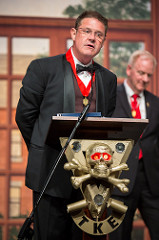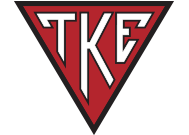This article is written by Timothy J. Murphy, Order of the Golden Eagle, Past Chief Executive Officer, Tau Kappa Epsilon International Fraternity. Identifying and Utilizing Your Leadership Style is Part 3 of an 8 part series on leadership. Part one can be found here. Part two can be found here.

Last time, we examined several traits of great leaders to inspire us to go from good to
“Leadership is the art of getting someone else to do something you want done because he wants to do it.” – President Dwight D. Eisenhower
There are many identified styles associated with leadership; several authors and researchers over the years have examined this issue. These following styles are ones I think are most prominent, as we can all identify people in our chapter and in our lives who exhibit these various styles. See if you can decide which one you are most of the time.
- The Consensus-Builder is the leader who collaborates with just about every chapter member to communicate, educate, and achieve agreement on a particular issue. If he wants the chapter to engage a particular program or service; or to adopt a new policy or Bylaw; he takes the time to “sell” his idea to the individual members, one-on-one. This style takes some time to engage, as you can imagine. However, this style also fosters deeper relationships with the
members, and allows everyone to feel like their thoughts and opinions are valued. - The opposite of the Consensus-Builder is the Authoritarian leader, sometimes known as the “Dictator”. This type of leader presents his positions and opinions as the ONLY strategy to engage, and he quite subtly demands compliance. He doesn’t interact well with other strong-willed people, as they delight in providing resistance to his ideas. This strategy is not recommended, and, quite frankly, should not only be avoided in your chapter, it should not be tolerated. Only weak organizations allow this style of leader.
- The Coach is always welcome in just about any organization, as his approach ensures the success of the chapter is achieved through developing the talent of the chapter members; teaching them strategies to help them
succeed; and acts as a “trainer”. He takes the time to work with members willing to learn newthings, and relishes in their successes. He is motivated by watching his chapter members grow and mature in their skills. - The Strategic leader focuses on goals and plans that have been
established, and uses these as a roadmap in formulating his success strategy. He isgoal-driven, and utilizes deadlines to keep members on task. This leader will look tohis chapter and identify where it has a competitive advantage over other fraternities, and showcase these in executing his plan. He is very proud ofhis chapter, but he’s not as “people-driven” as the Coach or the Consensus-Builder. - The Participative leader is not quick at making
decisions, and must check out the mood of the chapter on an issue before acting. Sometimes called a “democratic” leader, he will consult with individuals and teams/groups within the chapter to see how they feel, and gauge his approach accordingly. He is not particularly strong-willed or outwardly opinionated. Like a caricature politician, he’ll “test the waters” before committing to anything. - The Transformational leader is always high-energy and quite predictable in his approach to challenges. He thrives on fixing “broken”
organizations, and utilizes many strategies to ensure success. He is very much ego-driven, as he thrills at knowing he helped push his underperforming group to success. He is also concerned with how history will remember him; as such, he is also “legacy-driven”. This leader will be the “turn-around guy”, and will move on to other challenges as soon as he feels he has succeeded at his current project. - The Servant leader is just that – someone who leads the group by serving the collective members’ needs. He is motivated by what the group requires (but doesn’t have yet), and will engage strategies based on filling those needs. For example, he’ll put a lot of energy into financial management if the chapter finances are always a burden. He’ll pour resources and personnel into the rush program if satisfactory recruitment and retention
has been lacking. He is usually very gentle in demeanor andapproach, and fosters deep friendships in the chapter. - Visionary leaders are always interesting to watch. This leader has the rare ability to paint a mental picture of what success looks like, and motivates his fellow members by “seeing” the success. They solve individual problems using this style, as well as creating entire strategic plans based on providing a vision of excellence. They operate under the theory that if the members can actually see what the positive outcome looks like, they’ll inherently work towards that goal with high focus until it is achieved.
Have you determined which style is your dominant style; i.e., the style that you exhibit most of the time? Each of us has a dominant style, but we also might need to engage other styles now and then as a particular situation may dictate. Good leaders become great leaders when they identify what type they want to be, and make that part of their personal style.

